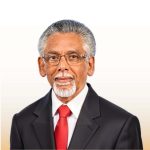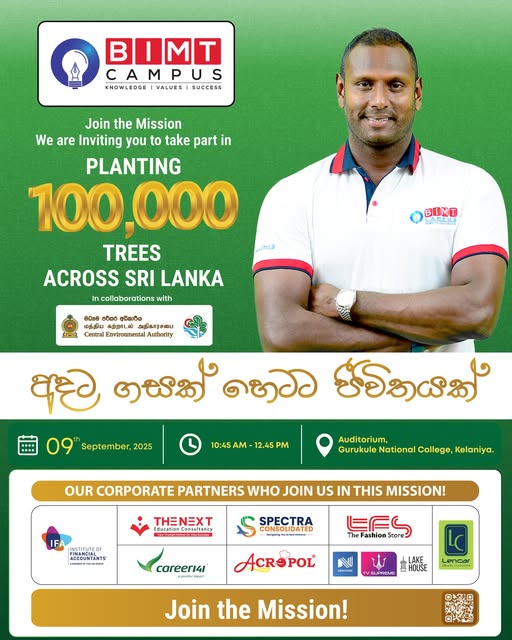Now Reading: Transformative Roadmap in Cybersecurity and Technology
-
01
Transformative Roadmap in Cybersecurity and Technology
Transformative Roadmap in Cybersecurity and Technology
Industry Leaders1 month ago
Innovative Solutions, founded in 2003, is a 100% Saudi-owned cybersecurity company that acts as a trusted advisor by delivering personalized, end-to-end solutions through local expertise, with a strong presence across the Gulf region.
Mr. Farzuhan Marlin
- Home
- Industry Leaders
- Transformative Roadmap in Cybersecurity and Technology
Innovative Solutions, established in 2003, is a leading cybersecurity company dedicated to protecting businesses with tailored solutions and exceptional service. Our mission is to “Bring Trust to Cyberspace.”
Innovative Solutions, also known as IS, positions itself as a Trusted Advisor to clientele, placing the clients’ interests first to design and deploy cybersecurity solutions. Accordingly, the company focuses on a customer intimacy strategy by offering a unique range of cybersecurity solutions through a deep understanding of targeted customer pains and needs. This allows for the personalization of service and the customization of products to meet differing customer requirements.
Clear competitive advantages include performing as a Trusted Advisor and providing end-to-end cybersecurity solutions, delivering them through KSA-based resources. Moreover, being 100% Saudi-owned, the company enjoys a higher ranking in terms of local content, which gives it an added advantage in bidding for government and semi-government projects.
The company is headquartered in Riyadh, with its footprint and reach spanning across Dammam, Jeddah, Dubai, and Abu Dhabi. Further insights were discussed with
Mr. Farzuhan Marlin
Chief Strategy Officer,
Innovative Solutions,
who is one of the three leaders managing the group of companies. Mr. Marlin is also responsible for strategic management, marketing, inside sales, human capital management, procurement, IT, business support, risk management, and compliance.
SAUDI VISION 2030 AND ITS IMPACT ON CYBERSECURITY AND TECHNOLOGY
Saudi Vision 2030 is a transformative roadmap aimed at diversifying Saudi Arabia’s economy, reducing oil dependency, and fostering innovation. Its core themes—Vibrant Society, Thriving Economy, and Ambitious Nation—emphasize technological advancements and digital transformation as critical enablers.
The initiative has spurred unprecedented investments in cybersecurity and technology to safeguard the Kingdom’s growing digital infrastructure. Programs like the National Cybersecurity Authority (NCA) ensure robust defense mechanisms to protect critical sectors, while Vision 2030’s digital focus drives advancements in AI, IoT, cloud computing, and smart cities like NEOM.
The thriving economy theme has boosted innovation hubs, tech startups, and global partnerships, creating a demand for skilled cybersecurity professionals. Furthermore, Saudi Expo 2030 and the 2034 FIFA World Cup amplify the need for secure digital ecosystems, fostering resilient, tech-driven growth.
Vision 2030 is transforming Saudi Arabia into a global technology leader, prioritizing cybersecurity to ensure trust and resilience in a digital-first economy.
Q : WHAT IS YOUR STRATEGY FOR MANAGING CYBERSECURITY TALENT, GIVEN THE SHORTAGE OF SKILLED PROFESSIONALS IN THE FIELD?
To address the cybersecurity talent shortage, our strategy aligns with Saudi Vision 2030, emphasizing workforce localization and upskilling. We focus on identifying and nurturing local talent through partnerships with universities and vocational institutions, offering internships, apprenticeships, and targeted training programs. Leveraging government initiatives like the Human Capability Development Program, we ensure alignment with national goals.
Additionally, we retain top talent by fostering a growth-driven culture with competitive compensation, continuous learning opportunities, and clear career pathways. Innovative Solutions actively collaborates with global cybersecurity experts, leveraging our partnerships to transfer knowledge and build capacity.
In light of Saudi Expo 2030 and the FIFA World Cup 2034, our talent strategy emphasizes scalability to meet heightened cybersecurity demands, ensuring robust protection for critical infrastructure. By investing in both local talent and strategic global hiring, we maintain a resilient workforce capable of addressing evolving cybersecurity challenges.
Q : HOW DO YOU FOSTER A COMPANY-WIDE CULTURE OF CYBERSECURITY AWARENESS, FROM THE EXECUTIVE LEVEL DOWN TO END-USERS?
We foster a culture of cybersecurity awareness by embedding it into our organizational ethos, aligning with Saudi Vision 2030’s focus on innovation and resilience. This begins with leadership: executives lead by example, prioritizing cybersecurity as a strategic imperative. Regular board-level updates and training sessions ensure alignment across all levels.
For employees, we implement engaging, role-specific training programs, leveraging gamification and real-world scenarios to make learning impactful. Cybersecurity is integrated into daily operations through mandatory awareness campaigns, phishing simulations, and secure practices reinforcement.
Recognizing the global spotlight on Saudi Expo 2030 and the FIFA World Cup 2034, we emphasize vigilance in safeguarding critical data. Cross-departmental collaboration and accountability are key, reinforced by clear policies and a rewards program for proactive cybersecurity behaviours.
By embedding awareness into our culture, we ensure that every employee becomes a critical line of defence against cyber threats.
Q : WHAT IS YOUR LEADERSHIP STYLE IN MANAGING CYBERSECURITY TEAMS, AND HOW DO YOU ENSURE CROSS - DEPARTMENT COLLABORATION ON CYBERSECURITY INITIATIVES?
My leadership style combines transformational leadership with a collaborative approach to inspire and empower cybersecurity teams. I focus on aligning the team’s goals with organizational priorities like Saudi Vision 2030, fostering innovation and resilience in a rapidly evolving cyber landscape.
To ensure cross-department collaboration, I emphasize clear communication and shared accountability. This includes regular interdepartmental meetings to align cybersecurity initiatives with business objectives, such as securing critical infrastructure.
I advocate for a “security-as-everyone’s-responsibility” mindset by involving all departments in cybersecurity planning, from IT and operations to HR and marketing. Tools like collaboration platforms and unified dashboards enhance visibility and coordination.
Additionally, I promote a learning culture by encouraging feedback, recognizing contributions, and providing mentorship, ensuring all stakeholders are aligned in strengthening the organization’s cyber resilience.
Q : WHAT STRATEGIES DO YOU HAVE IN PLACE TO IDENTIFY AND NURTURE FUTURE LEADERS WITHIN THE ORGANIZATION?
To identify and nurture future leaders, I employ a structured talent development framework aligned with organizational goals and Saudi Vision 2030. Key strategies include:
Leadership Identification: Using performance evaluations, 360-degree feedback, and psychometric assessments to identify high-potential individuals with strong technical expertise and leadership aptitude.
Customized Development Plans: Offering tailored training programs, mentorship, and leadership coaching to prepare employees for advanced roles. For example, cybersecurity challenges related to Critical Infrastructure in light of the upcoming global events to be held in KSA are incorporated into training scenarios.
Career Pathways: Establishing clear career progression opportunities, including cross-department rotations to build a holistic understanding of the business.
Innovation Challenges: Encouraging participation in strategic projects, hackathons, and think tanks to foster problem-solving and decision-making skills.
Recognition and Inclusion: Creating a culture that celebrates achievements and involves emerging leaders in key decision-making processes, ensuring long-term engagement and retention.
Q : HOW DO YOU DEFINE EFFECTIVE LEADERSHIP WITHIN THE CONTEXT OF OUR COMPANY'S CULTURE, AND HOW DO YOU MEASURE IT?
Effective leadership within our company’s culture is defined by the ability to inspire, align, and drive teams toward achieving shared goals while embodying core values such as innovation, collaboration, and customer-centricity. In the context of Saudi Vision 2030, leaders must also demonstrate agility in navigating rapid technological changes and cultural nuances.
Key traits include clear communication, strategic vision, inclusivity, and accountability. Leaders should champion cybersecurity excellence, particularly in preparation for high-stakes events like Saudi Expo 2030 and the Football World Cup 2034, ensuring organizational readiness.
Measurement methods include:
1. Performance Metrics: Assessing team productivity, project success rates, and alignment with strategic objectives.
2. Employee Engagement: Conducting regular surveys to gauge trust, morale, and alignment with leadership vision.
3. Customer Impact: Collecting feedback and satisfaction levels tied to leader-driven initiatives.
4. Succession Outcomes: Tracking leadership development programs that produce competent successors.
This holistic approach ensures leadership effectiveness aligns closely with our core values and organizational objectives.
Q : HOW DO YOU EVALUATE AND ENHANCE THE EMOTIONAL INTELLIGENCE AND DECISION - MAKING SKILLS OF CURRENT AND EMERGING STAFF MEMBERS?
Evaluating and enhancing emotional intelligence (EI) and decision-making skills is critical to fostering strong leadership and collaboration within our organization, especially in the context of Saudi Vision 2030’s emphasis on human capital development.
Evaluation:
1. Self-Assessments and 360-Degree Feedback: Tools to assess EI competencies like self-awareness, empathy, and interpersonal skills.
2. Scenario-Based Exercises (Development Centers): Assess decision-making under simulated real-world challenges.
3. Performance Reviews: Focus on adaptability, teamwork, and conflict resolution.
Enhancement Strategies:
1. Training Programs: Workshops on EI, decision-making frameworks, and conflict resolution.
2. Mentoring and Coaching: Personalized guidance from experienced leaders.
3. Role-Playing and Case Studies: Develop critical thinking and emotional responses to challenges, including managing security risks during global events like Saudi Expo 2030 and the 2034 World Cup.
Results are measured through improved interpersonal dynamics, quicker, well-reasoned decisions, and feedback from peers and leaders.
Q : HOW DO YOU ASSESS SKILL GAPS ACROSS THE ORGANIZATION AND WHAT STEPS ARE TAKEN TO ADDRESS THOSE GAPS THROUGH TRAINING OR RECRUITMENT?
Assessing skill gaps and addressing them effectively is critical for sustaining organizational growth, especially as we align with Saudi Vision 2030’s focus on a knowledge-based economy.
Assessment of Skill Gaps:
1. Competency Matrix Evaluation: Conduct department-specific evaluations to map existing competencies against organizational goals.
2. Performance Reviews and Self-Assessments: Identify areas of improvement through regular evaluations and employee feedback.
3. Emerging Trends Analysis: Align skill requirements with future demands, such as cybersecurity needs for events like Saudi Expo 2030 and the 2034 World Cup.
Addressing Skill Gaps:
1. Customized Training Programs: Develop internal and external training to upskill employees.
2. Partnerships with Educational Institutions: Collaborate on tailored programs to prepare the workforce.
3. Targeted Recruitment: Bring in specialized talent to fill immediate gaps.
4. Regular Re-Evaluation: Ensure alignment with strategic goals and evolving industry demands.
Q : HOW DO YOU ENSURE THAT COMPETENCY-BUILDING PROGRAMS ARE PERSONALIZED AND ALIGNED WITH THE INDIVIDUAL'S CAREER GOALS, AS WELL AS THE COMPANY'S STRATEGIC OBJECTIVES?
Ensuring competency-building programs are personalized and aligned with individual career goals and company objectives requires a structured and empathetic approach.
Individual Assessment and Goal Setting
• Conduct personalized development discussions during performance reviews to understand employee aspirations.
• Use psychometric tools and self-assessments to identify strengths and areas for improvement.
Competency Framework Alignment
• Create a competency framework that links individual growth paths with company objectives, such as those aligned with Saudi Vision 2030 and major forthcoming events.
Tailored Development Plans
• Develop learning pathways combining on-the-job training, mentorship, and external courses based on individual needs and organizational priorities.
• Assign projects linked to strategic initiatives, such as cybersecurity for forthcoming global events, to provide meaningful experience.
Feedback and Monitoring
• Regularly review progress to ensure alignment with evolving goals and refine plans accordingly.
This dual alignment fosters employee engagement and supports strategic growth.
Q : HOW DO YOU LEVERAGE LEADERSHIP DEVELOPMENT TO BOOST EMPLOYEE ENGAGEMENT ACROSS THE ORGANIZATION?
Leadership development plays a crucial role in boosting employee engagement by fostering a culture of growth, empowerment, and trust.
Empowering Future Leaders
• Identify and nurture high-potential employees through targeted leadership development programs.
• Encourage them to take on challenging projects that align with company goals, including initiatives supporting Saudi Vision 2030 and other major events.
Communication and Transparency
• Leaders serve as role models in communication, fostering transparency about company goals, challenges, and achievements.
• Open dialogues with employees build trust and increase engagement.
Mentorship and Coaching
• Establish mentorship programs where senior leaders guide emerging talent by offering career insights and developmental support.
• This strengthens employees’ emotional connection to the organization, promoting loyalty and retention.
Recognition and Growth Opportunities
• Acknowledge and celebrate leadership milestones while providing opportunities for advancement.
• Highlighting successful leaders’ contributions demonstrates the value of growth within the organization, boosting overall engagement.










